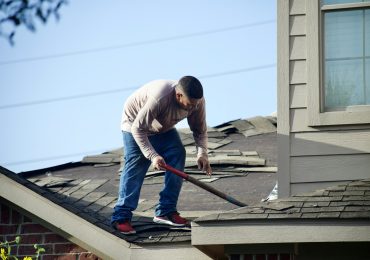Key Takeaways
- Understanding common roof issues and how to address them.
- The importance of timely roof maintenance and repair.
- Practical advice for homeowners on preventing roof damage.
- Professional insights on when to DIY and when to call in the experts.

Common Roof Problems
Because they are outside, roofs can develop a number of problems over time. Some of the most common problems include leaks, cracked shingles, and damaged flashing. There are numerous causes of leaks, including cracked shingles and flashing gaps. Finding and fixing roof leaks early can save you from costly repairs down the line. A diligent inspection routine can reveal these issues before they become severe, and addressing them promptly can save homeowners significant time and money. It’s often beneficial to consult with experienced professionals like a roof repair contractor to ensure the job is done right.
In addition, damaged flashing, which serves as a barrier to prevent water from seeping into your home, is another frequent issue. This component of the roof can weaken over time or be damaged by severe weather. Regular inspections can help pinpoint these problems before they escalate. Homeowners should examine their flashing after heavy storms or strong winds to ensure it remains intact and functional.
Why Timely Repairs Matter
Addressing roof issues promptly is crucial in preventing minor problems from escalating into significant damage. Ignoring tiny leaks, for example, can let water into your home and cause structural damage and mold development, which are frequently much more expensive to fix. According to the Department of Energy, an energy-efficient roof can also help reduce heating and cooling costs.
Moreover, timely repairs maintain the integrity of your home. Water intrusion can cause significant damage to the walls and foundation, jeopardizing the structural stability of your home. In addition to maintaining the value and attractiveness of your property, timely repairs and routine maintenance help keep it a secure and comfortable place for you and your family to live.
Preventative Maintenance Tips
- Check your roof consistently for signs of damage. This includes looking for missing, curled, or cracked shingles, as well as checking for granule loss.
- Clean gutters to prevent water buildup and leaks. Clogged gutters can cause water to back up under your shingles, leading to rot and leaks inside your home.
- Trim overhanging branches to avoid shingle damage. Branches rubbing against the roof can wear down shingles over time and provide a route for pests to access your home.
- Consider annual professional inspections and maintenance. Professionals can see potential issues that might be missed during a general homeowner inspection and provide solutions that prevent minor issues from becoming major problems.
Homeowners may greatly extend the life of their roofs and avert expensive problems by taking some easy precautions. Regular maintenance not only enhances the durability of the roof but also contributes to the overall efficiency and safety of the home.
DIY vs. Professional Repair
While some minor roof repairs can be handled by homeowners, knowing when to call in professionals is crucial. DIY can be cost-effective, but it comes with risks. Little tools and knowledge are required to perform simple repairs, such as patching tiny leaks or replacing a few tiles. On the other hand, complicated jobs, like replacing a sizable portion of the roof or fixing significant water damage, should be left to qualified roofers.
Professional contractors not only have the expertise but also the right tools and safety gear. Missteps in the repair process can worsen the damage and lead to additional costs. Moreover, professionals can identify underlying issues that might be overlooked in a DIY approach, providing long-term solutions rather than temporary fixes.
Choosing the Right Materials
Selecting the appropriate roofing materials can significantly impact the longevity and performance of your roof. Asphalt shingles are recognized for their affordability and ease of installation. Metal roofing, though more expensive, offers superior durability and can last up to 50 years. Tile roofs provide a traditional look and are highly resistant to fire and weather damage.
Make sure to choose materials that suit your region’s climate and your home’s architecture. For resources on selecting energy-efficient and durable materials, consult with experts and reference reputable sources like the Family Handyman to help inform your decision. Proper material selection not only enhances the aesthetic appeal of your home but also its functional resilience.